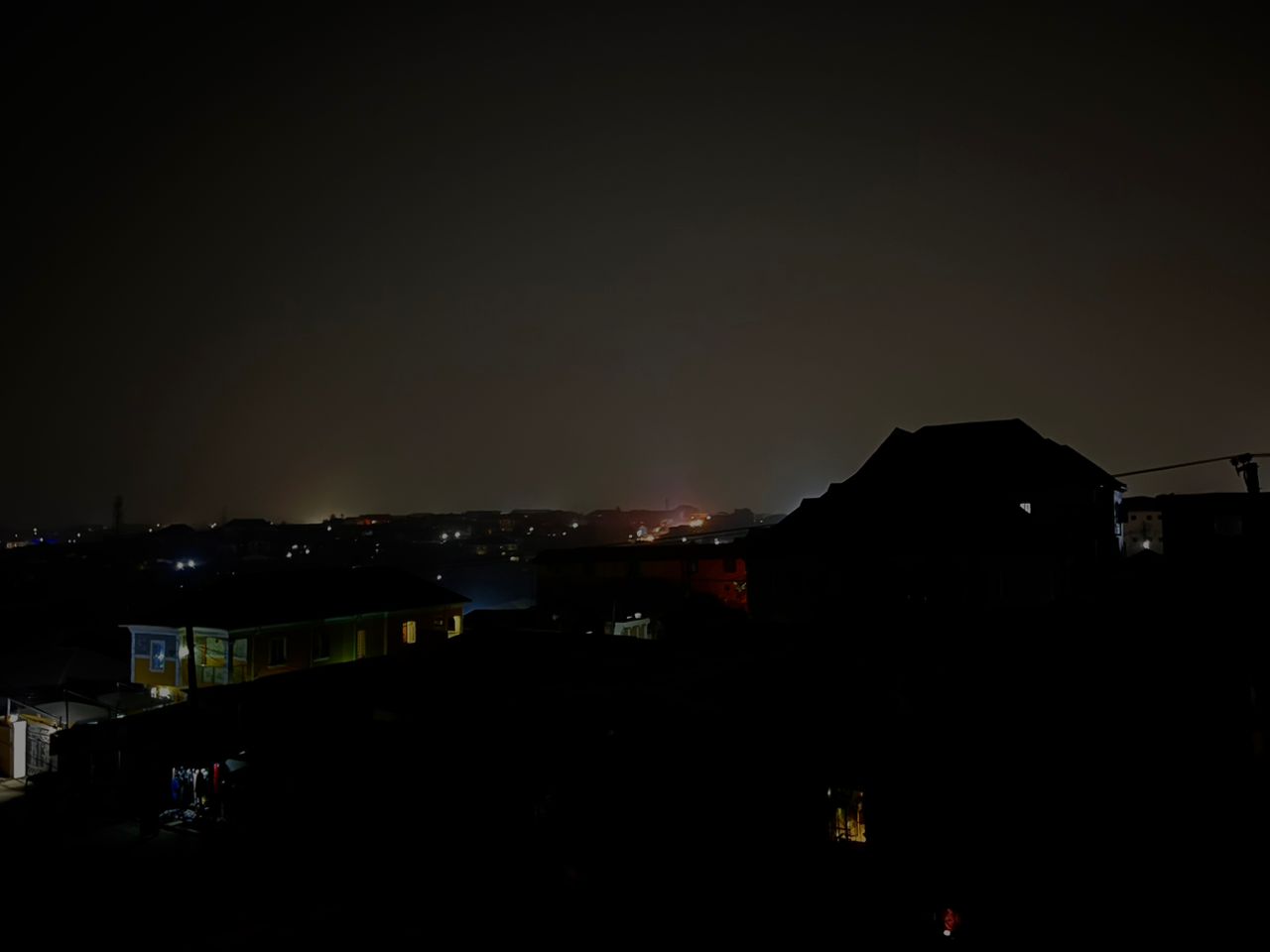Residential buildings converted to business premises without approval risk collapse ďż˝ NISE president
National President of the Nigerian Institution of Structural Engineers and a fellow of the Nigerian Society of Engineers, Peter Igbinijesu, tells AYOOLA OLASUPO how the engagement of qualified manpower can address the incidence of building collapse in the country
Do you see the incidents of building collapse are the result of changes in the method adopted by developers different from what was the standard in the past?
�Nothing has changed. It�s still the same and it (building collapse) is even more rampant now. In the past, it was not just major news daily but now, it is and that is why it seems as if it is different. There is no difference. It is the same building collapse and the reasons responsible for it are still the same.
Many expected fewer occurrences with the application of improved technology and innovations. Why is the situation different?
That is supposed to be the ideal situation, that with technology, we are supposed to get good results in all our designs and construction methods but we discovered that if one does not have the basic experience, one cannot apply it in architecture or engineering. It is what you put into it that you will get. What happens goes beyond that because there are certain things you must take into consideration for your design to be perfect. Even when your design is perfect, at the construction stage after you might have given the necessary specifications, if it is not adhered to, the building will collapse.
Technology is supposed to bridge the situation but it is breeding laziness such that people no longer do the due diligence in cross-checking that what they are doing is perfect. This computer-aided design has now resulted in computer-aided disaster. So, there is a need for people to be careful because when you�re putting all your data, it will come up with the results for the design you want. In the past, when a design was completed, a superior hand did a crosscheck. The purpose is not just to condemn what was done but to be sure that no omissions were made. But today, people rely on computers to hasten their construction.
Is this a burden created by technology or its application?
Technology is good but what we are saying is let us be careful and in doing that, we need experience. The other aspects have to do with the plant and machinery. Technology has come in to fast-track the tedious processes in construction but in doing so, you need the basic experience. So, even at the construction stage, there are certain things. Of course, you now have a concrete mixer or a batch plant. These are equipment that can mix concrete for you but the structural engineer who has the design has given what should be the strength he wants and you have to do proper calibration or the proper mix ratio of your aggregates – sand, gravel, and cement, or water content into your mixer ďż˝ to produce the concrete on time.
What are the factors that can put a building at risk of collapse?
For a particular building or those beautiful buildings you see three stages are involved. The first stage is the design stage. The second stage is the construction stage and the third stage is the usage. A developer or a client or whoever wants to erect a building has the right to say what they want and seek the services of professionals. Every type of soil has the capacity of the weight they can resist. There are several loads, including the bed load, imposed loads, and the wind load. The bed loads are what you incur as the set weight of those social elements. The imposed load is activities that will be coming into place either at the construction stage or when the building is completed.
All movable furniture, human traffic, and the rest are what we call the imposed or life load and the wind load depends on how high and the character of your neighbourhood where that building will be sited.
What is the role of the structural engineer at this stage?
A qualified structural engineer takes all these conditions and other forces that will come into play in designing all the structural elements. In the process of doing the design, a structural engineer must have specified the type of materials, concrete, and soil that must be obtained as you are doing this construction. At the usage stage, the client must have accepted the design.
What is the risk involved in using residential buildings for commercial purposes?
When a building has been designed as residential some people turned it into a commercial one. Some even go to the extent of making it an educational facility. The type of usage of the building also determines the load. If a building is not used for what it was constructed for, it will collapse. The way we can stop this is straightforward: engage the services of professionals. Don�t be carried away that professionals are too expensive because, in the long run, it is going to be better for you. After all, if you invest your money and your building collapses, such money is lost, apart from the human lives that will be involved.
The foundation of a building is one of the factors that put a building at risk of collapse. The load combination is another. What was the consideration of the effect of the wind? What type of construction methods, materials are you using, and tests are being carried out? So it depends on some factors. The ones that are coming down do so during construction, not even when they have been open for habitation. It shows that it is either a result of faulty design or inadequacies in construction positions. There are a lot of things to take into consideration. There are basic things that must be carried out, including soil investigation and report, to be able to design a proper structure for you.
How can one determine when a building is at risk of collapse?
It is very easy. If it is a building that has been completed already there are certain vibrations you will get from it, then you will start noticing cracks and sinking of the building. If you notice these components and you are not sure, kindly raise the alarm. During construction, every stage should be signed off by professionals before it is completed. The regulation says before a stage is completed, a relevant professional involved should sign it off.ďż˝ These will minimise the risk factors.
How do environmental factors such as climate change affect a building�s stability?
Some agencies have data about the condition of the wind for 20, 30, or 40 years and they will give it to you to know the wind conditions around there. Luckily for us, we don�t have earthquakes but there are ground movements, and little tremors here and there and that is why we say fieldwork and analysis are very important.
Some people have identified the quality of raw materials used for building these structures as a major factor. How much of a concern should this be?
Of course, our markets are flooded and that is purely the problem of the greed Nigerians are known for. We indeed have a lot of substandard materials in the market. That is why I said the services of professionals should be sought because a structural engineer has the means, and the knowledge to carry out the necessary tests. Wherever you procure your materials they can advise. In sourcing materials, it is important to avoid substandard ones and demand the manufacturer�s test certificate.
How do changes in building codes and regulations affect building safety and stability?
There are a lot of codes in the Nigerian market. Those in the structural engineering practice started with the British. There is the American standard so there are different codes but it comes down to the application. You adopt the code to your situation. The condition under which all these codes were developed may not apply to us in Nigeria as a result of the weather conditions. Areas that are prone to earthquakes have their own. Codes are there to guide it.
There are issues around some building professionals not practicing in the area of their competence. What are your thoughts about that?
That is where we professionals appear and it is a major issue and can be a factor to be considered for building collapse. When a professional ventures into another person�s work, that is what we call quackery. Being a quack simply means you left your area of specialty and competence and dabbled into someone else�s profession. As a structural engineer, I cannot say I can do an electrical engineer�s job.
In what ways can the federal, state, and local governments, as well as regulatory bodies collaborate to improve the situation?
It purely requires enlightenment, a serious campaign on our part as professionals. Then on the part of the governments, let them start showing examples. I don�t think anybody has been found wanting or jailed (for building collapse. When a building collapses and someone dies, the owner of the property or the developer and the contractor should be charged in court for manslaughter or murder. If we start with that, you will discover that people will be afraid to do anything shady because they know that if anything (bad) happens, they will be charged in court and go to jail. It is just for the government to be sincere and in this case, this is where private investigators are needed to carry out the necessary quest.
Are existing laws adequate?
Our laws are very adequate. It is just that the enforcement is not appropriate. People just get away with it (unethical practice) or bribe their way out. You know the system is corrupt. We just need to be sincere to ourselves and I just hope that we�ll have a government that can take the bull by the horns. It should not be business as usual. It is a pity that over these years, a lot of human lives have been lost. People should be prosecuted and jailed. As I said earlier, let it be seen that people are charged with murder, manslaughter, and injuries so that we will sit up.
Those who know what they are doing do not take unnecessary risks because they don�t want to lose the money they have invested. They make use of the regulatory bodies and all the professionals in the built environment. The regulatory bodies have sanctions for any of their members who do not adhere to the codes of conduct that govern their profession. For structural engineers, we have the Council for the Regulation of Engineering in Nigeria. We also have our institution, the Nigeria Institute of Structural Engineers, a division of the Nigerian Society of Engineers, and we are purely for structural engineering works.
Also, when it comes to structures in the construction of buildings, there are many specialists. Some are specialists in high-rise buildings and structural elements on roads and bridges. Some are specialists in communications and power. We can even say we have specialists among specialists. So, the regulatory bodies are there trying their best to enforce compliance. At COREN, there are different specialists and we have a forum in which we talk to one another.
We have been carrying out a lot of advocacy. We want people to be aware. What we are saying is if you have somebody who is a builder, you see any structural engineer and you don�t see the logo of the engineer in their drawing, please raise the alarm. So, the regulatory bodies are doing their best.
What drastic steps do you think the President-elect should take to curb the menace of building collapse in the country?
By law, it is the regulatory bodies that are recognised. So my advice to the incoming government on this menace of building collapse is for it to strengthen the existing institutions. There should be no compromise. Let�s get competent people to help these institutions.











